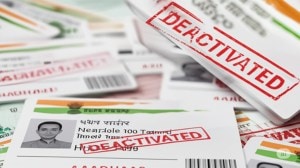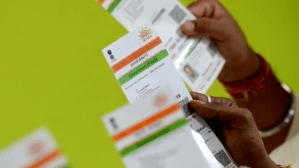Technically, the iPhone 16 Pro isn’t targeted at enthusiasts. It’s a pro-level iPhone that Apple—probably—wants people with some skill and know-how to get, for the simple reason that, they would get it. Case in point, The Weeknd and team, are shooting music videos with it. Anybody can buy the iPhone 16 Pro but not everybody needs it. It is overkill, is what it is. Even more so, the iPhone 16 Pro Max.
The sheer calibre of these devices shows in pricing. Traditionally, they have been priced exorbitantly. Often out of reach for the typical enthusiast. Lame kidney jokes and memes flood the internet every time a new one shows up. But despite everything that has happened in the past, the iPhone 16 Pro is—also—being projected as a pro-enthusiast. It can still do many “pro” things and it still costs a bomb, yet something is different about it.
The big takeaway is that—in what seems like the first time—this pro iPhone is a page-by-page copy of its pro max sibling except for the screen size and battery capacity obviously. Until last year, Apple would leave something, some feature, some quirk, for the higher-end model, to perhaps justify its higher asking price. Unless there are some internal changes we can’t see until we get our hands on it, the iPhone 16 Pro does everything that the 16 Pro Max can, at a lower price no less.
Apple Intelligence check, ProMotion check, A18 Pro with 6-core GPU check, 8GB RAM check, Camera control check, 5x telephoto camera check, 4K at 120 fps video recording check, USB 3 check.
An even bigger takeaway is that the 16 Pro costs Rs 15,000 less than what the iPhone 15 Pro did at launch (Rs 1,19,900 versus Rs 1,34,900). The pricing was revised to Rs 1,29,800 recently after India moved to lower import duty on smartphones. Even compared to that, the 16 Pro has been launched for ∼Rs 10,000 less. The iPhone 16 Pro Max is cheaper, too, by nearly the same margin. But the pro max would always be “top shelf.” The lower launch price makes the iPhone 16 Pro somewhat even more desirable. Maybe that was the plan, all along.
There’s no denying that Apple wants to sell more of these, and India has the appetite, but it’s also a smart and savvy market, one that seeks utmost value from every purchase. And Apple, for the first time, seems eager to give them what they want. Lowering the launch price would draw their attention, giving them value would make them buy it—a win-win for both Apple and India’s aspirational middle class.
iPhone 16 Pro: A love letter to India
But why the love for India? Apple hasn’t lowered prices anywhere else like this. What changed? The simple answer to that is—India is a changing. What once contributed to less than 1 percent of its global market share, has become a rare “green spot.” Indians are warming up to iPhones and Apple is watching. And, responding accordingly.
Quarter after quarter, the Cupertino tech major is chalking up double-digits on iPhone sales here, while back home—and globally—business is not what it used to be at one point in time. Apple’s quarterly revenue fell to USD 90.8 billion, down 4 percent year over year in the fiscal 2024 second quarter ended March 30. India remained a silver lining in the months that have followed. With growing regulatory pressure in Europe and a sales slump in China, India needs to perform even better for Apple in the coming months and years.
The appetite helps its case. Reports suggest that India is cruising to become one of the world’s largest consumer markets in the next five years. It was the fifth largest market for iPhones last year. Apple needs India more than India needs Apple. And rightly so, the ball is rolling. Easily the biggest asset for a global company is local manufacturing and distribution. Apple, under the leadership of CEO Tim Cook, is breaking new barriers on both fronts each day.
The iPhone 16 Pro and 16 Pro Max are on course to be made in India. They’re the first pro iPhones that Apple will ever make here. The idea is to also export in which case, India will become the second big player after China to hold this capacity. By 2025, it plans to shift 25 percent of its manufacturing to the country. Currently, it’s at 14 percent.
For distribution, Apple has opened its own exclusive stores in Delhi (Saket) and Mumbai (BKC) and in the words of Cook himself, the company is continuing to expand its channels across both online and brick-and-mortar. It’s a long game but Apple’s now in it, full time. India is not just a hobby, but a serious occupation. It’s no longer an option, but the only option. And the iPhone 16 Pro launch prices are indicative of where we are and where we are going.








